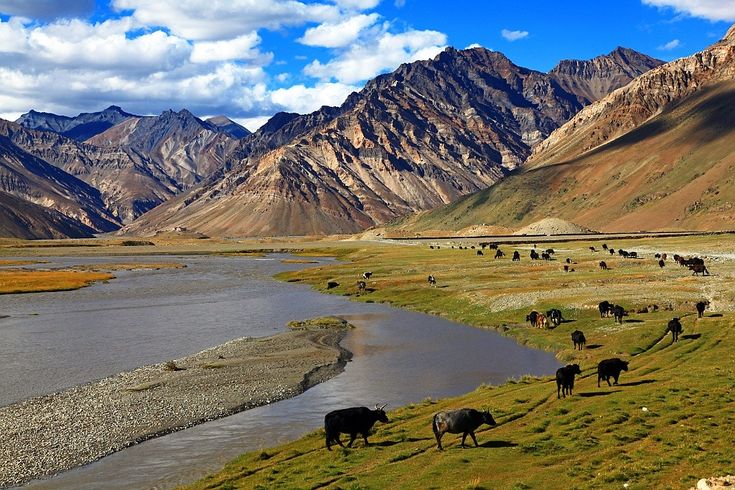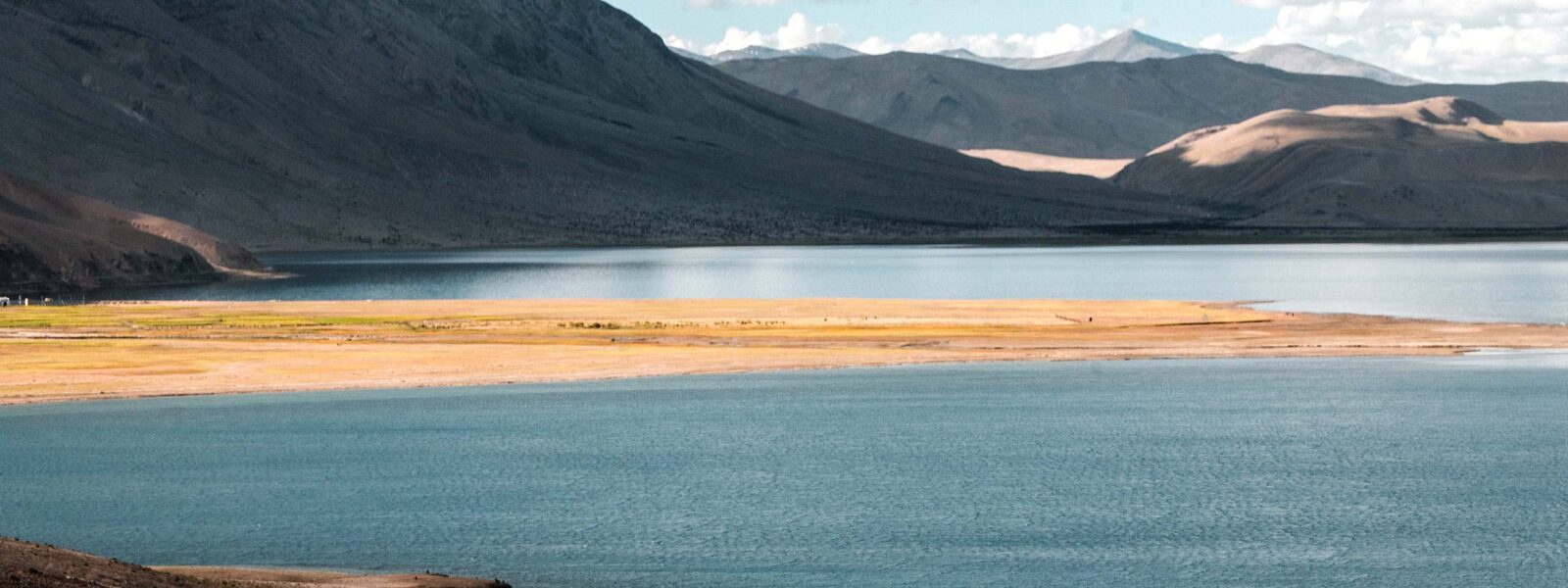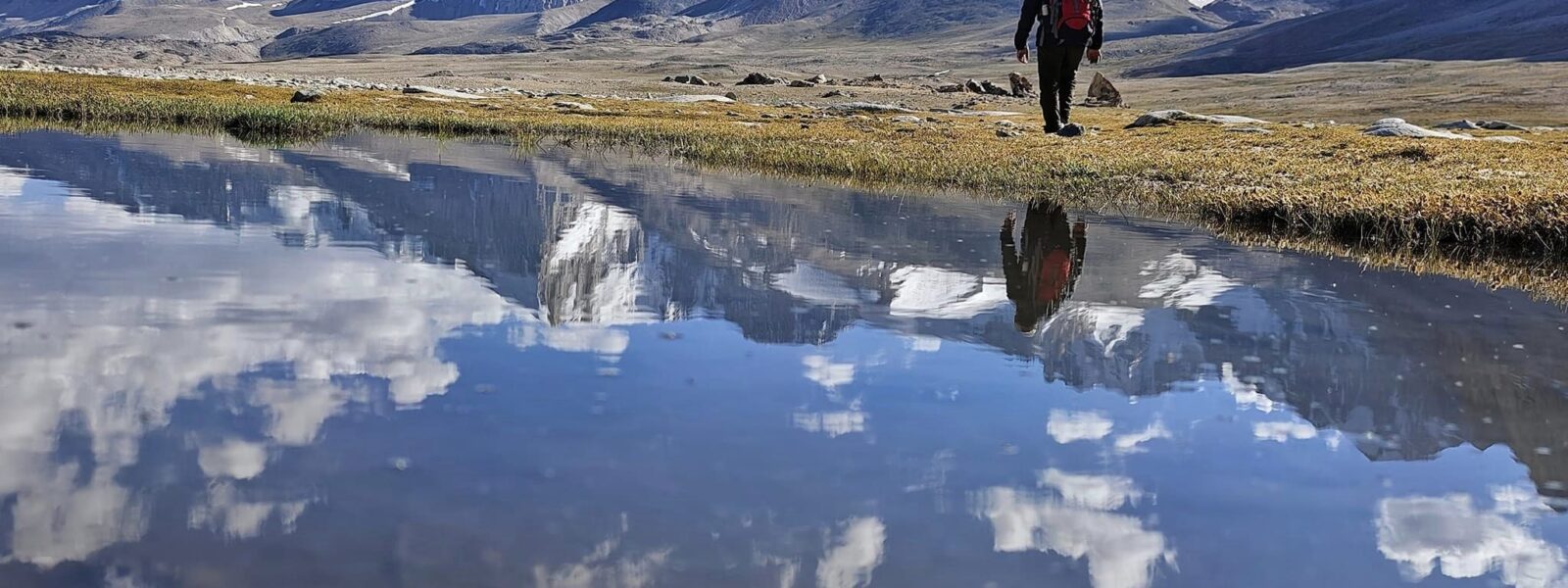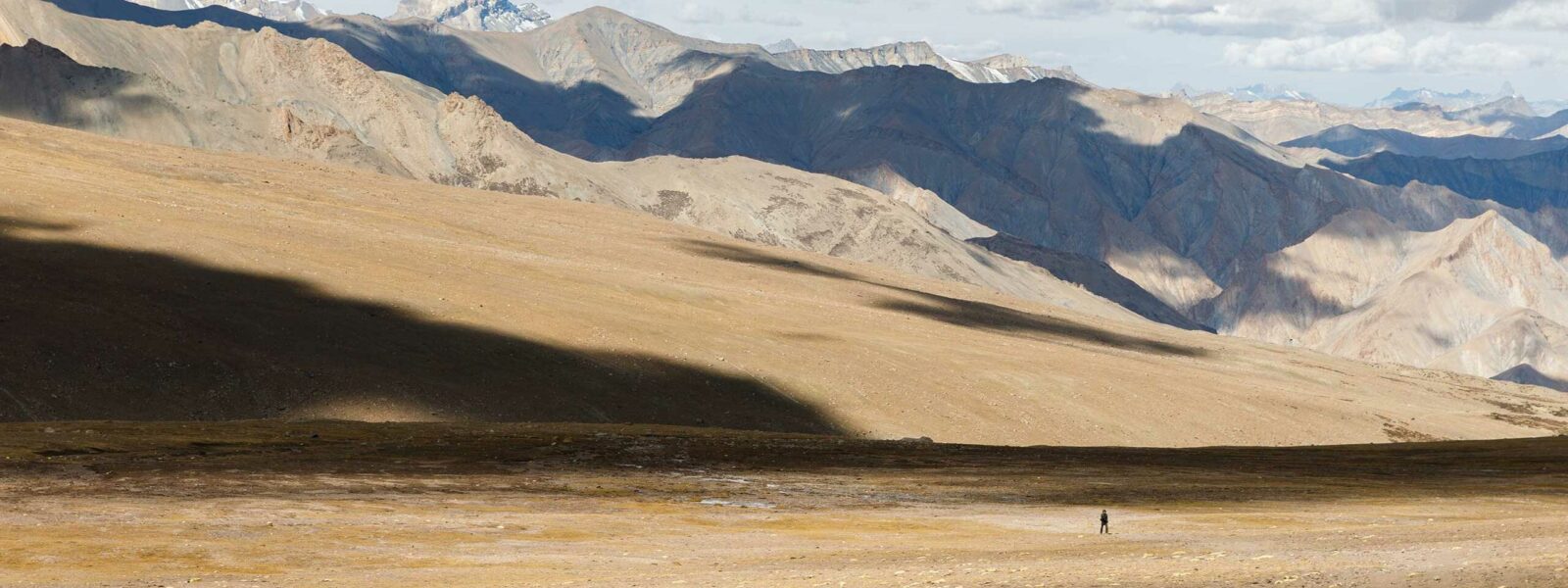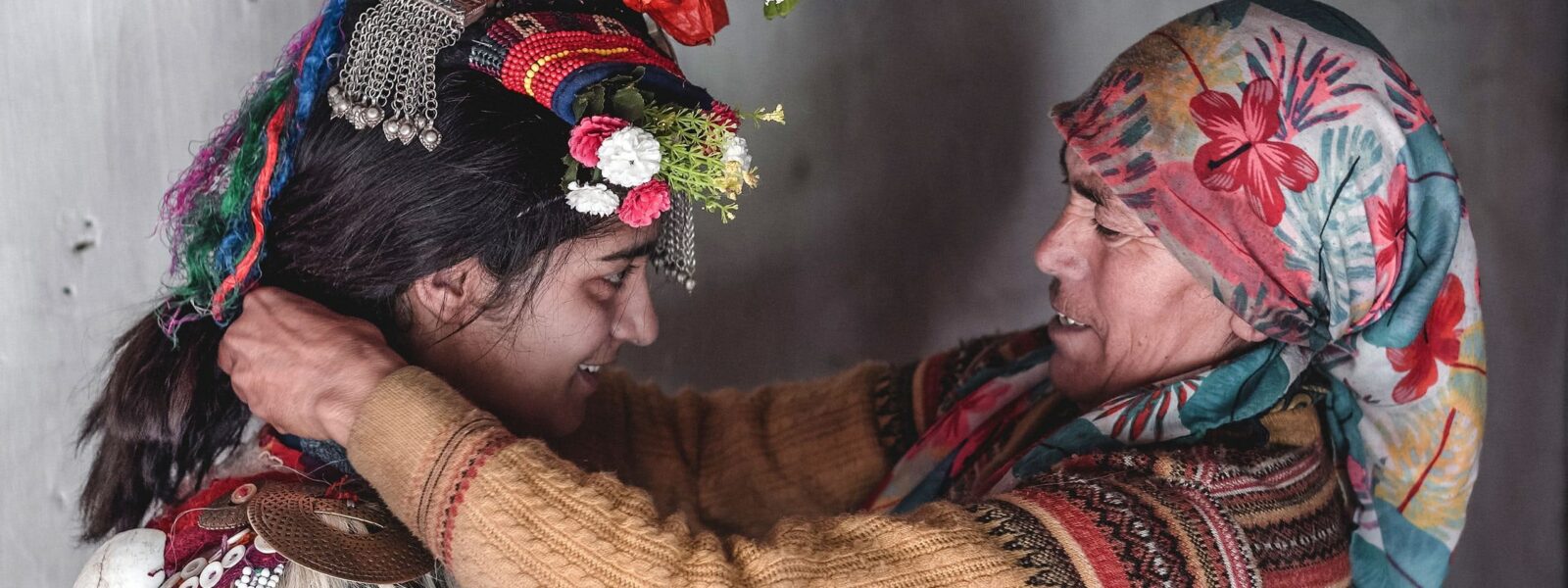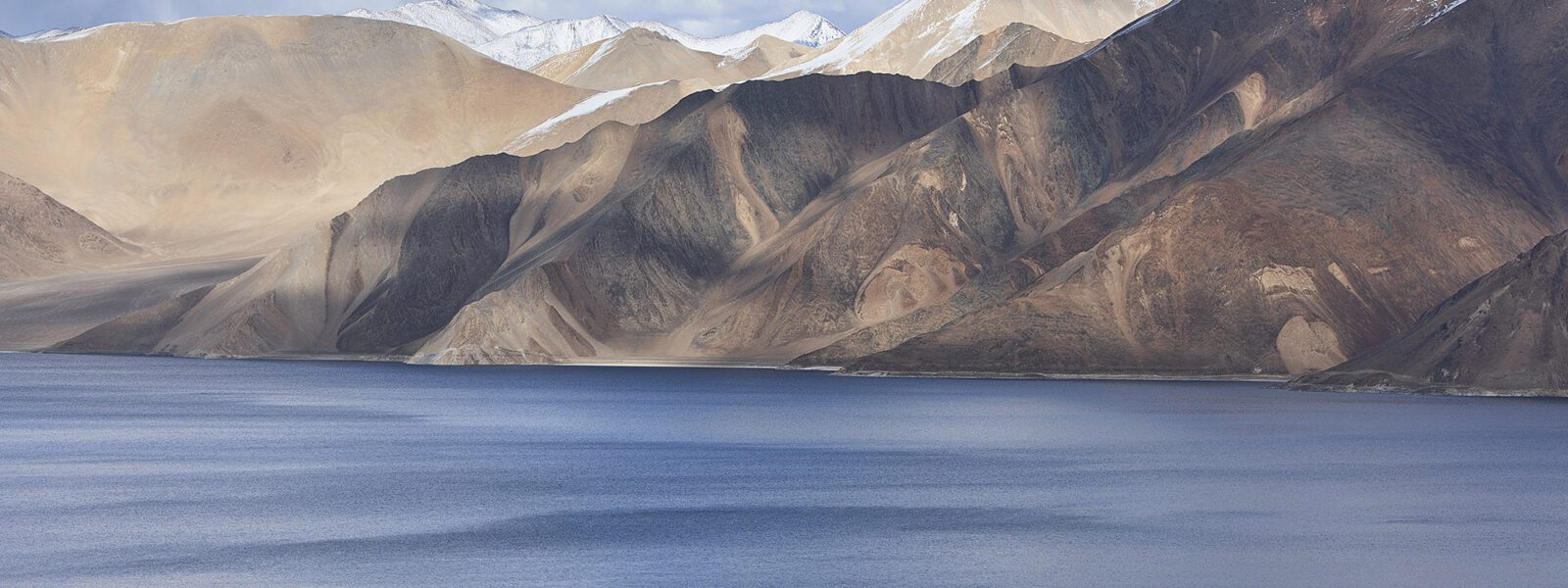Unraveling the Unknown Horizons: LADAKH, A JOURNEY FOR THE STRONG-HEARTED: EXPECT THE UNEXPECTED!
After many years of traveling through India, both personally and while organizing trips as a travel designer, I’ve come to realize something: India is not a place you simply choose to visit. It’s not a destination you mark on a map or pick from a glossy magazine. No, it’s quite the opposite. It is India that chooses you, that wraps itself around you, that invites you in. It’s not us who enter India; it’s India that enters us. And nowhere is this sensation stronger than in Ladakh.
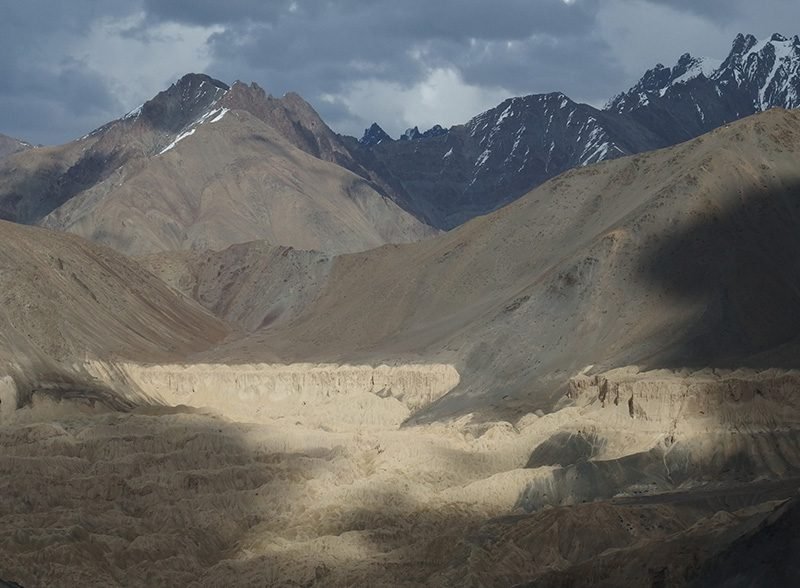
This land, nestled between the towering ranges of the Himalayas and the Karakorum, lies in the northern Indian state of Jammu and Kashmir, near the borders of Pakistan and China. Its landscape is a high-altitude desert, dotted with small green oases like the capital Leh, home to around 10,000 people. The average altitude hovers around 4,000 meters, and the climate swings between cold and freezing all year round. Ladakh is not a place you pick on a whim while flipping through a travel guide or absentmindedly pointing at a spinning globe. It’s not the sort of place one thinks of for a conventional vacation: “This year, I feel like going to the mountains. What do you think, dear, should we choose Corvara in Val Badia or Nurla in the Nubra Valley?” No, a trip to Ladakh is something deliberate, something deeply motivated. That’s why I believe it is Ladakh that chooses who among us will tread its valleys and mountains.
For Ladakh is not an easy place. It’s remote, it’s a land of edges, and it’s not for everyone. Ladakh is cold—not so much during the day when you’re moving around and can bundle up, but especially at night. In tented camps, guesthouses, and modest hotels, heating is a rarity. You’ll sleep wrapped in layers of blankets, and if that’s not enough, you’ll keep on your fleece and thermal underwear. Even in the warmest season, from May to September, temperatures can drop well below freezing at night, and a bitter wind often sneaks in through the cracks of doors and windows, where double glazing is a luxury you rarely find.
If Ladakh stirs something inside you, if it whispers your name, then these things become secondary. You accept the simple, rugged conditions of its camps and hotels. But for some, the hardest adjustment might be the idea that public bathrooms—whether on the roadside or at a rest stop—often consist of four walls and a hole in the ground.
Take, for example, the restroom in the parking lot of Diskit Monastery. There’s no glass in the window, and the air that wafts through cleanses the space a bit too efficiently. But then you’re rewarded—the view from the latrine offers a breathtaking glimpse of the Nubra Valley below. Such is the contrast of Ladakh: discomfort and beauty, all wrapped into one.
Even in restaurants, the situation isn’t much better when it comes to amenities, but the food, at least, is always simple yet dignified. Out here, at the edge of the earth, the quality of food still depends heavily on the whims of the weather. High-altitude farming, practiced mostly for subsistence along the banks of the Indus and Zanskar rivers, yields bitter greens, various tubers, carrots, and apricots. The rest comes by road from Kashmir, assuming the roads are passable. Late snowfalls this year delayed the arrival of garlic in Leh, causing quite the stir among local cooks and homemakers, who suddenly found themselves deprived of an essential ingredient in Indian cuisine.
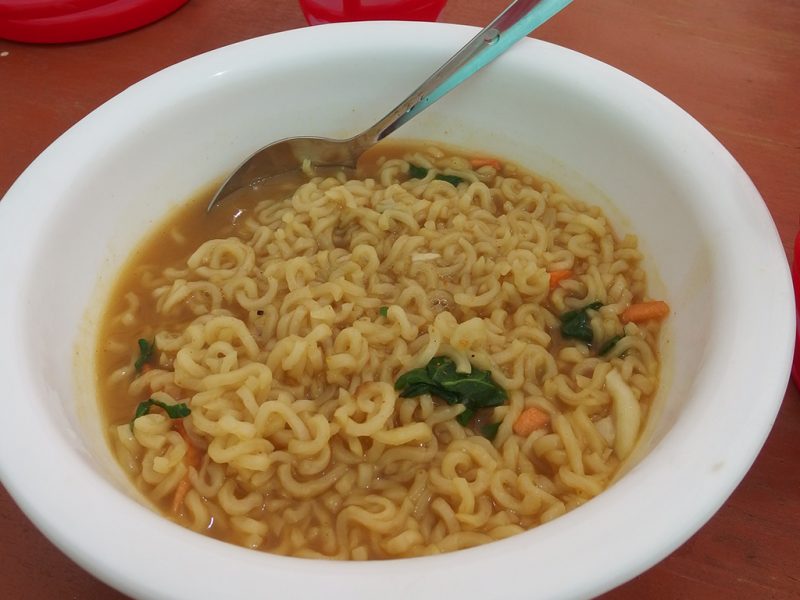
Most Ladakhi restaurants are small rooms crammed with tables and a gas-powered kitchen. The menu usually offers five or six dishes, and one or two of those might be unavailable. Carbonated drinks like Coca-Cola or Fanta are always listed on the menu but rarely found in the stockroom. Instead, there’s a sweet, natural apple juice from Kashmir, which pairs well with simple dishes like momo (stuffed dumplings, fried or steamed), Chinese-style chow mein noodles, vegetable soup, fried or steamed rice with chicken or mutton, and bowls of unsettlingly familiar instant noodles branded “Maggi” (pronounced “magghi” by locals).
In the resorts and hotels, the selection is broader, and there are even some laudable, if questionable, attempts at pizza and pasta. But for most meals, you rely on the box lunches provided by your hotel or stop by the small restaurants lining Leh’s main market. Along the roads, the more “lived-in” establishments are usually recommended by local drivers—true road artists. Like all artists, they alternate between displays of pure talent behind the wheel and moments of wild abandon. The vehicles up here tend to be well-worn; dust, snow, mud, rocks, and potholes are their daily companions.
Few drivers equip their cars with snow chains, and most navigate the treacherous roads with tires that would make my trusted mechanic cringe—he’d probably say they were only fit for erasing pencil marks. The roads in Ladakh are narrow, winding, and often riddled with potholes. At times, they are nothing more than rocky trails through the sand. Some of the most challenging paths, like those leading to the Kardung La or Chang La passes, are barely wide enough for a single vehicle.
The drivers form a deep connection with their cars. They keep them clean, maintain them daily, and often sleep in the driver’s seat at night, wrapped in nothing but a light jacket. They know every road, every shortcut, and their familiarity with the mountainous terrain is nothing short of extraordinary.

This Familiarity, and the Unsettling Art of Driving in Ladakh: A Dance with Chaos
There’s something about the way drivers in Ladakh navigate these perilous roads that would send shivers down the spine of any European trained in the art of road safety. Beyond the simple confusion of left-side driving—a relic of British colonial days—there’s an entire attitude, a philosophy of chaos, that reveals itself as you journey through this land. If you’re not from here, you quickly learn that it’s best not to focus on the thin centimeters separating your vehicle from the edge of the cliff, or the terrifying speed with which your driver rounds blind curves, mid-lane. If you wish to preserve your sanity, you don’t linger on the moments when the driver overtakes lumbering military trucks, honking madly, the soldiers in the back swaying precariously with their rifles, or the fact that all this happens while the driver, with one hand on the wheel, is deep into a text message exchange with his girlfriend.
Somewhere near the Chang La pass, 5,360 meters above sea level, I found myself immersed in one of those wonderfully surreal, quintessentially Indian moments. A single-lane road, buried under 30 centimeters of snow, winding its way through towering white walls that shimmered under a sapphire sky. It felt like a scene from a fable, the perfect backdrop for spotting snow leopards or golden eagles. Yet here we were, stuck in the most mundane of human conditions: a traffic jam. A column of vehicles climbing the pass, another descending, and not an inch of space for anyone to move. Two enormous military trucks faced off, one crammed with clanging metal drums (contents unknown, but my imagination whispered gasoline or something worse), the other’s wheels spinning uselessly in the snow, its cargo of flammable fuel sloshing ominously.
No snow chains, no winter tires. The situation seemed unsolvable: two behemoths locked in a duel on this narrow, snow-covered road, each with a string of 20 cars and vans behind them. But India, in its peculiar way, doesn’t follow the rules of logic. After three hours of countless attempts—sandy earth scattered under tires, animated discussions in Hindi, Ladakhi, English, and the hybrid language of Hinglish—cups of steaming gur-gur chai appeared from nowhere, morale lifted, and by some miracle, the jam broke. The traffic inched forward once again, threading its way through this impossible mountain artery.
For those unfamiliar with these heights—or for those who aren’t mountaineers like Simone Moro—spending more than 10 to 15 minutes above 5,000 meters is generally ill-advised. Just enough time to snap a few photos, sip some chai at a roadside shack, or take the highest pee of your life. But after three hours at this altitude, where oxygen is scarce and the body feels the weight of every breath, exhaustion overtakes you. As we descended, I drifted off into a sleep haunted by a strange thought: why does it feel like Gigio Donnarumma is driving? When I awoke near Chemrey Monastery, the goalie had been replaced by our driver, Fida, expertly guiding the Mahindra through the winding roads.
Another aspect of Ladakh that might deter the average traveler is the heavy military presence. After all, this is a border region—on one side, Kashmir, a place marked by the enduring Hindu-Muslim tensions that date back to India’s independence and the creation of Pakistan and Bangladesh. To the west, Pakistan, a country that, according to my Indian friends, spends more of its GDP on weapons than on schools and roads. And to the north, China, another global superpower, one that local monks and Buddhists hold responsible for the persecution of their Tibetan cousins. So, it’s no surprise that the valleys of Ladakh are dotted with military camps, and that its roads, passes, bridges, and airports are under the tight control of the Indian Army.
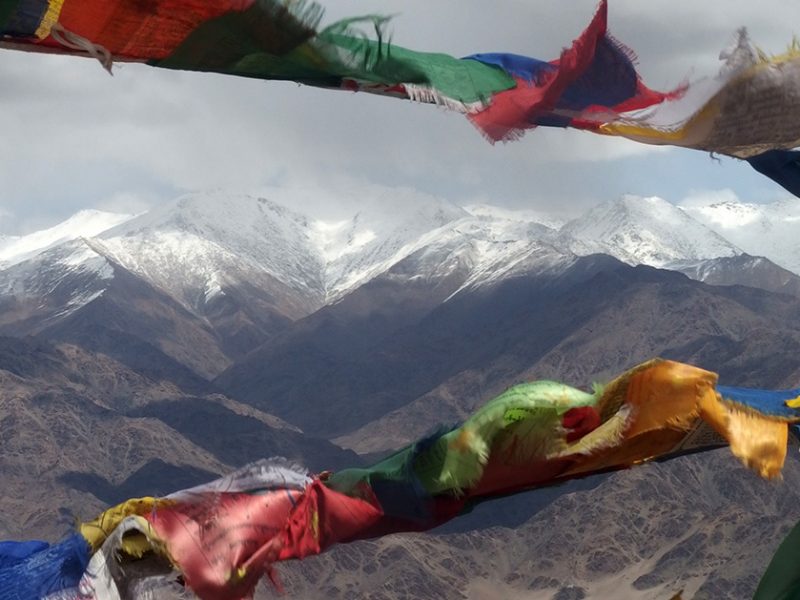
As a foreigner, I had to secure multiple permits to move around certain areas, like the Nubra Valley and Pangong Lake, close to the Sino-Tibetan border. The military presence isn’t particularly intrusive, though I admit it always unsettles me to see a soldier in full uniform, machine gun slung over his shoulder, casually shopping at a store in Leh. I’ve never been fond of the militaristic world, and the slogans plastered around Ladakh—“Train hard, fight easy” or “Only best of friends and worst of enemies visit us”—trigger my instinctive aversion. But I can’t deny that without the Indian Army, there would be no roads, no bridges, no food or fuel supplies, no electricity, and no internet. Power lines, signal towers, and connections are all maintained by the military, who repair everything after each harsh winter, ensuring a fragile but functional infrastructure.
Yet for the traveler still captivated by Ladakh’s call, the lack of a strong internet connection is hardly a concern.
Those flying from Delhi to Leh will find themselves rubbing their eyes—not just from sleep deprivation (flights leave at dawn)—but from the breathtaking landscapes below. High-altitude valleys, snow-capped peaks that seem to brush against the plane’s wings, unspoiled expanses, and then, suddenly… Ladakh. The golden rocks, the villages framed by green oases. Just landing here is a spectacle in itself.
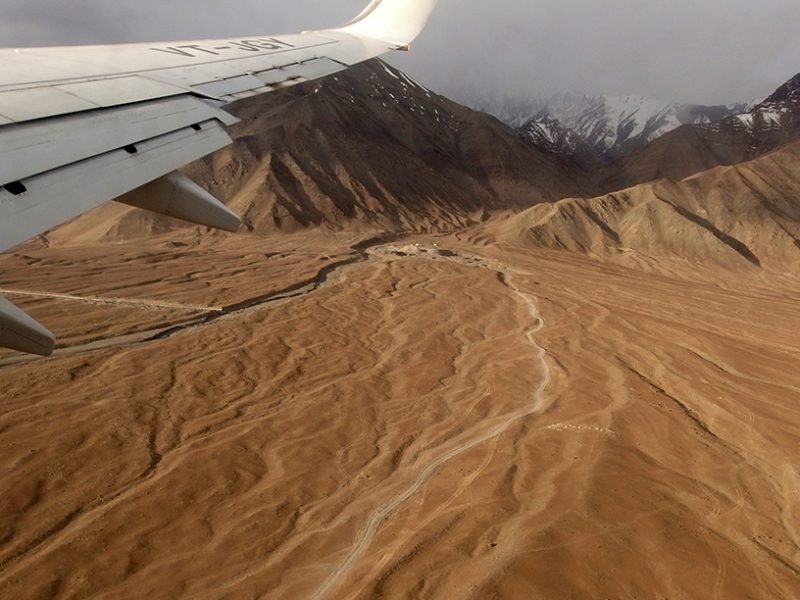
Living at altitudes between 3,500 meters in Leh and 5,600 meters at the Kardung La pass is an experience reserved for the strong-hearted. The air is thin, cold, and dry, and the lack of oxygen works its wonders on the body. Even the most committed smokers find themselves unable to inhale more smoke than air without fainting. Meals become lighter, fluids increase, and soon, your body adjusts, walking more slowly, syncing with the rhythm of this stark landscape. The smartphone, once an extension of your hand, now remains in your pocket, mute, disconnected from the world.
But the most striking transformation is how Ladakh teaches silence. Even the most talkative of souls find that here, the effort to walk, breathe, and speak simultaneously is too much. They pant, they struggle, and soon, they learn to hold their tongue, to think twice before wasting breath on unnecessary words.
In the newfound silence, you begin to hear things—like the wind whispering through the mountain poplars, the call of marmots scurrying among the rocks, the rustling wings of a magpie strengthening its nest, or the gentle gurgle of the Indus River, your constant companion in these valleys. Or perhaps you hear nothing at all, and that silence itself becomes the most profound sound of all—a silence that, in its overwhelming vastness, breaks through the noise of modern life and reminds you just how quiet the world can be.
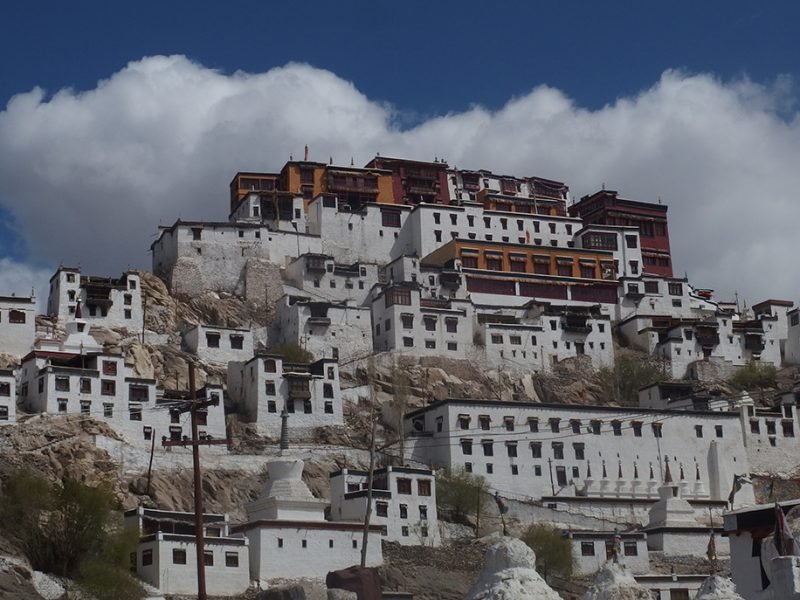
On the Roof of the World, One Step from the Sky: The Magic of Ladakh
High above the world, far removed from the noise and comforts of the big cities, it’s almost inevitable that you find yourself contemplating the great questions of spirituality. Standing before nature so untamed, so wild, so beautifully eternal, you can’t help but wonder—who created all of this? How? And most importantly, why? In these Himalayan lands, Buddhist monasteries dot the landscape, simple structures made of wood and ancient stones, adorned with endless prayer wheels and brightly colored flags fluttering in the wind, carrying the mantra “om mani padme hum.” In these remote refuges, overlooking landscapes of almost divine emotional intensity, whole communities of monks live, undisturbed and at peace (unlike their Tibetan counterparts). They dedicate their lives to study, prayer, meditation, Tibetan-Ayurvedic medicine, and the Buddhist quest for Nirvana. Yet they also address more earthly concerns: managing orphanages, educating local children through seminars and schools, and even publishing writings on modern issues like climate change.
There are countless monasteries in Ladakh, each one fascinating, each one worth a visit. But a few stood out to me in particular. Diskit Monastery offers a breathtaking view of the Nubra Valley and its unique sand dunes carved by the Shyok River. Thiksay Monastery, perched on a hill about twenty kilometers from Leh, is an incredible sight, its resemblance to Lhasa’s Potala Palace making it recognizable from afar. Lamayuru, with its simple, straightforward architecture, stands where spectacular geological formations rise like something from a lunar landscape, and a valley rich with terraced fields rests in the shadow of immense snow-capped peaks. Alchi, though less impressive from the outside, reveals stunning wooden carvings and exquisite frescoes of Kashmiri style within.
For those who feel the strong desire to travel to Ladakh, the magic of these immense spaces and the dominance of nature won’t disappoint. Ladakh rewards those who don’t shy away from the discomforts and inconveniences necessary to reach it and live there. For me, Ladakh gifted me an experience that I’ll likely never replicate: after a long, scenic journey through the Shyok River Valley, where an infinite series of panoramas changed constantly with the movement and shape of the clouds, I arrived at the shores of Pangong Lake. This remote place, set quite literally in the middle of nowhere at 4,200 meters above sea level, is shared by peaceful yaks and wild donkeys who compete for the scarce blades of grass growing here, just a few kilometers from the Tibetan border.
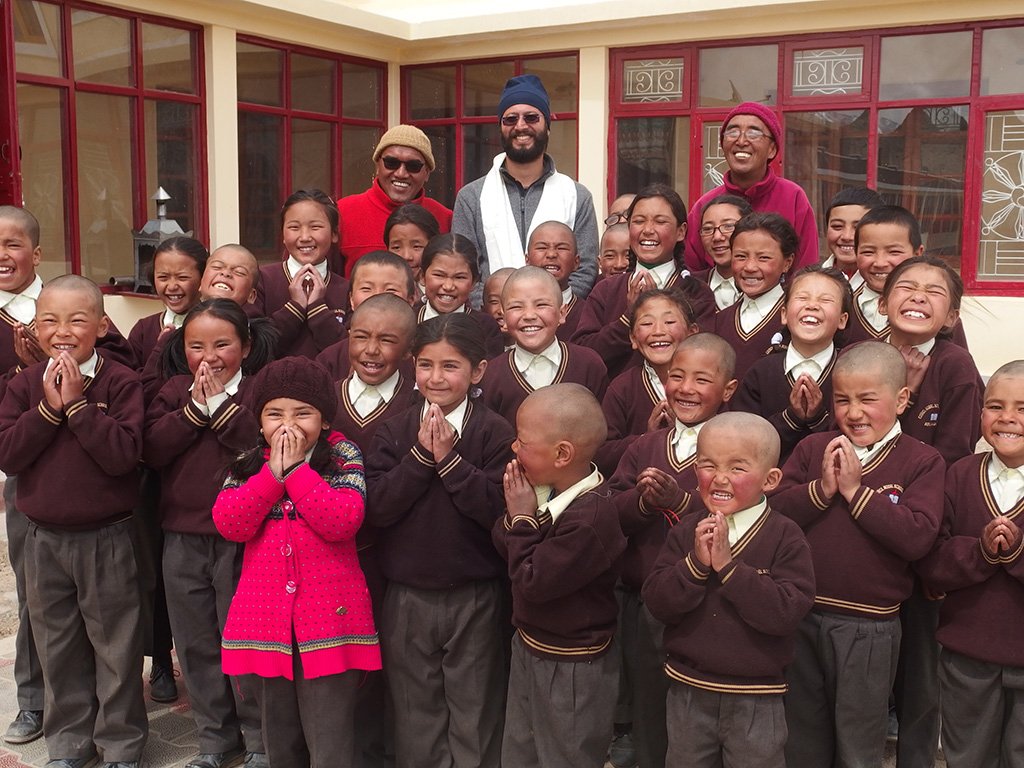
As the sun set, the colors of the lake shifted like a mad painter’s brush sweeping across a canvas—blue, turquoise, emerald, then orange, violet, and finally, as darkness fell, the lake turned black, as black as the sky. I watched this natural masterpiece from the comfort of my bungalow, which had a wide glass window facing the lake. I drifted into a deep sleep, but sometime around 4 a.m., something disturbed my rest. Tossing and turning beneath thick blankets, I finally gave in and opened my eyes. A faint yet persistent glow was coming through the window. Could it be dawn already? Impossible. Rubbing my eyes, I looked again: the sky was filled with stars, an endless field of shimmering lights piercing the black firmament, their reflection dancing on the surface of the lake.
The heavens wrapped around the earth in a cascade of stars, and there I was—small, insignificant—mouth open, eyes wide, staring in awe like a child with his nose pressed against the glass.
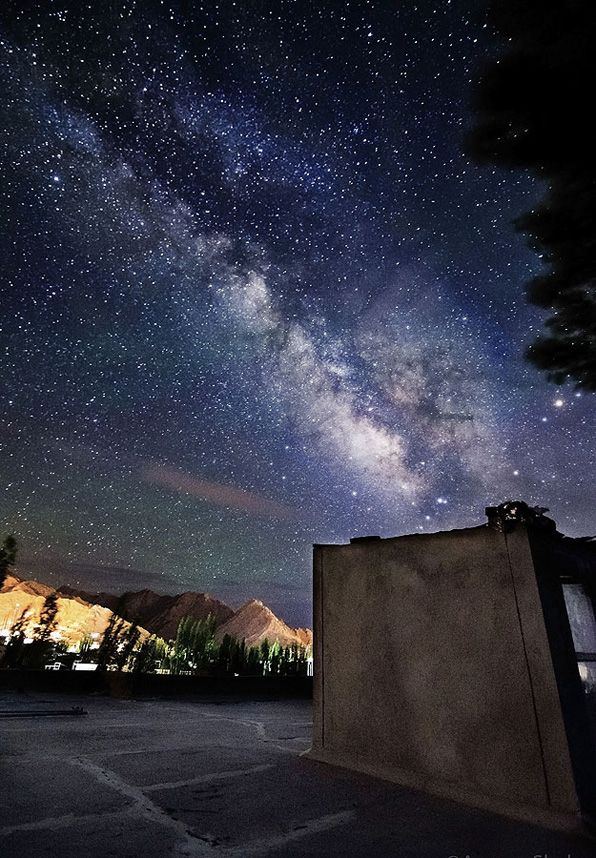
This is the magic of Ladakh: expect the unexpected.
The Reference Article LADAKH, UN VIAGGIO PER CUORI FORTI: EXPECT THE UNEXPECTED!

